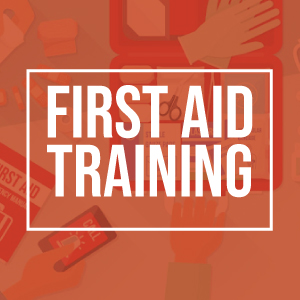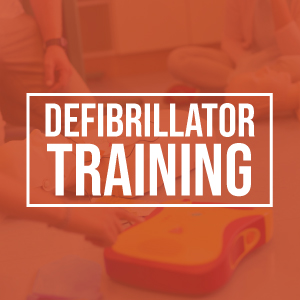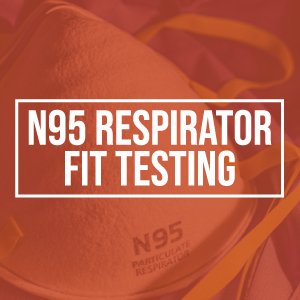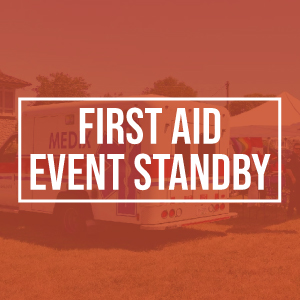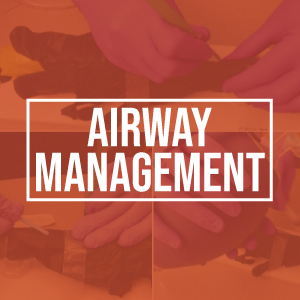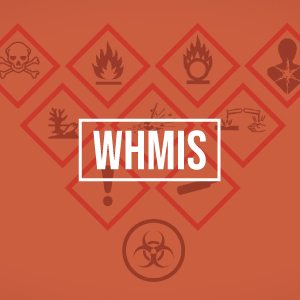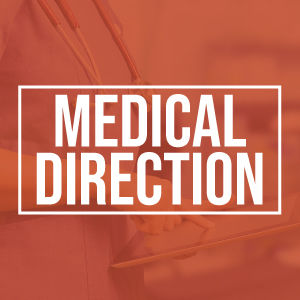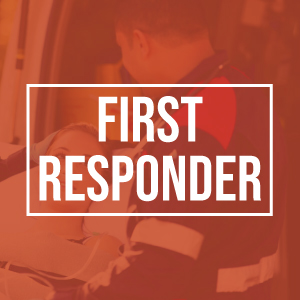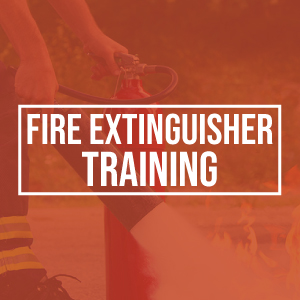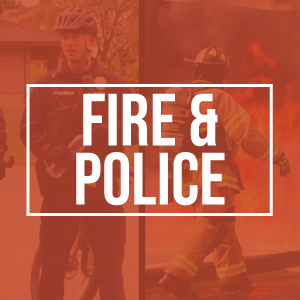CPR
Learning CPR is the best way to fight cardiac arrest. Cardiac arrest is still one of the largest killers of adults ages 18-65. The odds of encountering a victim suffering from a heart attack/cardiac arrest are actually rather high when compared to other causes of death.
Please note:
As of July 1st, 2019, Second Chance CPR has discontinued CPR-HCP (Health Care Provider) and is offering CPR – BLS (Basic Life Support) Provider as the replacement. This change was made to stay in line with the needs of our professional responders (Nurses/Paramedics/Fire Fighters). CPR Level BLS is equivalent to CPR-HCP.
You can be sure that the instructor we assign to you is a professional with years of experience in the field. They are not only experienced as an instructor in a first aid and CPR class, but they’ve performed live-saving techniques extensively.
The programs meet the standards and guidelines as set by the International Liaison Committee on Resuscitation (ILCOR) for Cardiopulmonary Resuscitation and Automated External Defibrillator courses. The courses include information on appropriate rescue techniques for patients of all ages as well as critical information on heart disease, stroke, risk factors, prudent heart living and heart and lung function. Students will learn the signs of heart attack, stroke, and choking emergencies, as well as treatment of respiratory emergencies on how to utilize barrier devices with the use of bag-valve mask (BVM) on adult, child and pediatric patients.
First Aid
Our experienced professional instructors teach employees that First Aid training can often limit the severity of work place injuries.. Hundreds of injuries occur daily. It can be as minor as a cut to the finger or as serious as a chemical burn. Injuries can be painful and limit an employee’s ability to work safetly. Second Chance CPR is proud to be a Provider of First Aid training under Regulation 1101 of the Workplace Safety and Insurance Board of Ontario.
Standard First Aid
| This course teaches the participant how to approach and manage medical emergencies and provide care to the patient until EMS arrives. This course is required for workplaces employingsix or more workers in any one shift at a work area or those interested in gaining enhanced first aid knowledge and skills as required by the Workplace Safety and Insurance Board under which Second Chance CPR is an approved provider for First Aid programs (WSIB Reg. 1101).This course is also utilized by health care professionals and students entering classes in the Health Care Field (Nursing, Police, Firefighting, Dental Assistants, and Health Care Workers).
All courses include an Emergency Action Guide (First Aid Booklet), Wallet cards, and printed wall Certificates for courses attended. The participants will also receive a single use Face Shield (CPR barrier device). |
||
| Courses Include following topics: Bleeding and Wound Management
Muscular/Skeletal Emergencies Head & Spinal Emergencies Respiratory Emergencies Optional AED Module |
Burns
Seizures Diabetic Emergencies Poisoning Triage |
Airway
Breathing Circulation Rescue Breathing CPR Skills Heart Attack & Stroke Choking (conscious/unconscious) |
Emergency First Aid
This course teaches an emergency approach on how to manage medical emergencies and render aid until professional help arrives. This course is required for workplaces employing not more than five workers in any one shift at a work area or those interested in gaining first aid knowledge and skills (WSIB Reg. 1101). This course covers the compulsory topics of the Standard First Aid course.
The instructor assigned to your location will be a professional in their field with years of experience. You’ll find that we have a convenient and flexible scheduling system that will meet your first aid CPR certification needs.
Our classes are tailored to meet the site specific needs of our clients . The instructors will make sure that all employees are familiar with the type of safety equipment available to them.
The First Aid Courses offered:
- Standard First Aid Initial Program (16 Hrs.)
- Standard First Aid Recertification (8Hrs.)
- Emergency First Aid Initial Program (8Hrs.)
- Standard First Aid with AED (16 Hrs.)
Defibrillation
Automated External Defibrillators are quickly becoming common place in facilities, factories and gathering places in Windsor and Essex County as well as world wide because it is being recognized as the single most important contributing factor of survival. AED’s increase a victims chance of survival at the scene prior to Emergency Responders arriving.
These machines can be found in schools and institutions, retail stores and community centres throuout the region. The AED training class is designed to teach students the who, what, when, why, where, and how of Defibrillation. With CPR and AED training, a victims chances of survival are dramatically increased when the patient faces Sudden Cardiac Arrest and an AED is present. This class is generally incorporated into the CPR training course with minimal impact on time.
This year we are pleased to announce the addition of the LIFEPAK CR2 training to our list of available programs that target Public Access Defibrillator Responders. This is the newest unit with the latest technology in AED’s on the market.
Second Chance CPR also offers the LIFEPAK 1000 AED for Corporate Security, and Health Sector Employees, while also offering training programs for Public Access Defibrillator Responders utilizing the LIFEPAK CRPlus. This unit is the preferred AED being utilized throughout Essex and Kent County for the Public Access Defibrillator Program. Second Chance CPR has also developed training programs for other AED manufacturers. For more information and to see a list of available programs, please contact us.
Schools
Second Chance CPR has been a proud and supporting partner with our local school boards in training students in this most important life skill. SCCPR has been involved for over 20 years assisting the Boards with the different initiatives surrounding CPR. Some of our Instructors are Registered with the Ontario College of Teachers as well all our Instructors possess valid Police Clearance Certificates as well are screened under the Ministry of Education’s Ontario Education Services (OESC).
Police & Fire
Second Chance CPR is proud to be the provider for Fire Departments and Police Services throughout Windsor and Essex County as well as are the program provider for FESTI, Billy Bishop and Ottawa International Airport.
First Responder
Second Chance CPR along with MedControl Consultants have created a Medical First Responder course. For Details, please contact us at 519-977-7017.
Airway Management
This course is designed to provide additional training for those interested in furthering their knowledge and response capabilities
when dealing with medical emergencies. As well as further supplementing their CPR, First Aid and Defibrillation training.
About the Course:
* 2 year Certification under Medical Direction
* approx. 4 Hour Course
* Prerequisite: Current CPR Certificate or current recognized equivallent
Course Content :
- Introduction to the course
- Recognition and Treatment of respiratory emergencies
- Use of bag-valve mask (BVM), adult, child, pediatric
- Resuscitation mask, suction equipment, Oxygen regulators, and other ventillation devices
- Demonstration of the stages in the administration of emergency oxygen
- Oxygen Tank, Oxygen Regulators, Airways, Standard Oxygen Kits will be used in the course
This course meets and exceeds the ILCOR guidelines
WHMIS (Workplace Hazardous Materials Information System) 2015
Workplace Hazardous Material Information System is a hazard communication system designed to ensure workers using hazardous materials, also known as controlled products, have all the necessary information to safely handle, store and dispose of these materials. The system has undergone a major update and implementation of the new standard was completed Dec. 1, 2018. The system has been aligned with the Globally Harmonized System of Classification and Labelling of Chemicals (GHS) under the Hazardous Products Act under Health Canada. For information on how the changes can and may affect you please give us a call.
This course meets the legislated worker training requirements for all Federal and Provincial workplaces in Ontario
Call Second Chance CPR for information and training.
Excerpt from Government of Canada Website on WHMIS 2015
On February 11, 2015, the Government of Canada published in the Canada Gazette, Part II the Hazardous Products Regulations (HPR), which, in addition to the amendments made to the Hazardous Products Act under the Economic Action Plan 2014 Act, No.1, modified the Workplace Hazardous Materials Information System (WHMIS) 1988 to incorporate the Globally Harmonized System of Classification and Labelling of Chemicals (GHS) for workplace chemicals. This modified WHMIS is referred to as WHMIS 2015. The Controlled Products Regulations (CPR) and the Ingredient Disclosure List have been repealed.
While WHMIS 2015 includes new harmonized criteria for hazard classification and requirements for labels and safety data sheets (SDS), the roles and responsibilities for suppliers, employers and workers have not changed.
Suppliers, defined as persons who, in the course of business, sell or import a hazardous product, will continue to:
identify whether their products are hazardous products; and,
prepare labels and SDSs and provide these to purchasers of hazardous products intended for use in a workplace.
Employers will continue to:
educate and train workers on the hazards and safe use of hazardous products in the workplace;
ensure that hazardous products are properly labelled;
prepare workplace labels and SDSs (as necessary); and,
ensure appropriate control measures are in place to protect the health and safety of workers.
Workers will continue to:
participate in WHMIS and chemical safety training programs;
take necessary steps to protect themselves and their co-workers; and,
participate in identifying and controlling hazards.
To provide Canadian suppliers, employers and workers time to adjust to WHMIS 2015, there is a transition period. During this period, suppliers are allowed to either continue to comply with the old HPA and the repealed CPR and Ingredient Disclosure List, or they must comply with the new HPA and the new HPR. However, the supplier must fully comply with either the old HPA/repealed CPR/Ingredient Disclosure List or the new HPA and HPR for a specific controlled or hazardous product. The classification, label and (material) SDS must comply fully with the specific legislation and regulation chosen by the supplier, and not a combination of the two.
A label or SDS that is compliant with the United States Hazard Communication Standard (2012) may not be sufficient for compliance in Canada. The supplier must be compliant with the Canadian requirements, whether the CPR or the HPR.
Consulting Services
Second Chance CPR has been training response type courses for over 25 years. Our dedicated team of professionals brings skill sets to the table to allow us to custom design programs in many different fields of discipline. With that knowledge and many years of professional response experience, we can help design specific training for your company.
N95 Respirator Training (QNFT)
Fit testing to a mask system (N95, half mask, full face) is necessary to ensure the worker has an adequate seal with the respirator to provide the required protection from a potentially dangerous atmosphere. Required by Occupational Health and Safety in all jurisdictions of Canada, Second Chance CPR utilizes the CSA Standard Z94.4 – 18, Selection, Use and Care of Respirators standard.
Second Chance CPR uses a Quantitative Fit Test machine called a PortaCount. This equipment provides accurate and repeatable results and is specifically recognized by the CSA standard.
Our Portacount Fit Test system can provide fit testing for many different mask systems through the use of adapters, allowing for efficient testing of multiple mask types during a single test appointment.
PROGRAM HIGHLIGHTS
The basic elements of a respiratory protection program are:
- hazard identification and discusses engineering controls
- exposure assessment
- education of employees on airborne hazards in the workplace
- selection of appropriate respirators;
- respirator fit testing
- provision of training in the proper use of respiratory protection;
- procedures for cleaning, inspecting and storing respirators;
- medical surveillance for workers using respiratory protection;
- maintenance of training, fit testing and medical surveillance records;
Employers must choose respirators based on the selection criteria:
- Respiratory protective equipment must be properly fitted to the wearer’s face.
- Employers must comply with standard when fit testing respiratory protective equipment.
- Employers must use the assigned protection factors (APFs) specified in that standard.
- Employers must develop a written code of practice governing the selection, maintenance and use of respirator
PLEASE NOTE: Participants attending Fit Testing must not eat, smoke, brush their teeth, wear perfume/cologne, chew gum or eat candy for ½ hour before the fit test. The equipment works by evaluating particles inside the mask, causing the participant to fail the test if any of the above are present during the test.
Fire Extinguisher Training
Fires in the home or at a place of business can be devastating and sometimes fatal. Understanding fire prevention, engineering controls and good housekeeping practices are keys to preventing fires. Effective training and the proper equipment for your environment are prudent to protecting lives and property.
Second Chance CPR is proud to use the LION (Bullex) Live Fire Intelligent Training System (I.T.S) Props
This course demonstrates the proper techniques to extinguish live fires under direct supervision of a qualified instructor.
Our course objectives are to assist you to understand:
- Classes of Fires
- How to make good decisions regarding your reactions to a fire
- Be able to classify a fire based upon the fuel that is burning
- Select the correct fire extinguisher based upon the type of fuel that is burning
- Develop an understanding of secondary hazards when a fire is present
- Conduct basic inspection, maintenance, and storage of fire extinguishers
- Fight or flight, how to make good decisions when faced with a fire
- Use of a fire extinguisher to put out several types of fires
- How to apply what you learn at home
- Home Fire Safety Tips
- Classes will discuss Smoke Alarms and CO detectors and their laws
Medical Direction
Second Chance CPR utilizes medical direction for its AED program, Oxygen Administration and Airway Management program. Dr. Curtis Fedoruk acts as our Medical Director and sets medical direction for our programs.
First Aid Event Standby
Clients who are involved in high risk activities or who appreciate the need for special emergency protection can rely on the standby services offered by Second Chance CPR. Our Event Standby teams cover your Event so you have medical standby coverage.
Second Chance CPR is proud to have served our community by ensuring their safety. SCCPR has provided standby services at:
MACKENZIE TOUR – PGA TOUR Canada (2018-2019)
SKATE AMHERSTBURG ICE SHOW (2017-2019)
LOCAL FESTIVALS AND EVENTS
OFSAA MENS SOCCER (2017-2019)
